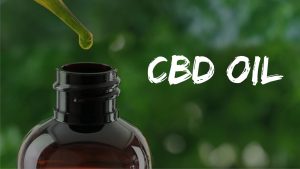Absorption Of CBD Oil For Our Companion Dogs And Cats

Pet parents depend greatly on anecdotal success rates when attempting (along with consultation with the animal’s regular vet) to care for the health and well-being of the companion pets.
The regulatory atmosphere that is limiting research concerning the consumption of CBD is as, if not more so, restrictive for the animal population as it is for humans. The length that the cited cases thus far explore goes far enough to suggest the likelihood of no side effects, unlikelihood for overdosing, and claims of potential medicinal and therapeutic properties benefiting both people and pets in reducing symptoms associated with specific ailments.
All pet parents want to provide the optimum care for their furry friends so that they enjoy a happier, higher quality of life and an extended lifespan. Most choose to include CBD products in the regimen because they wouldn’t want any less for their pets than they would want for themselves.
How Do Dogs And Cats Absorb CBD Oil Into Their Systems?
In order to effectively provide care for your dog or cat using CBD oil, getting the dose to the appropriate level is critical. But even if you and your vet attempt to appropriate the dosage, you further need to familiarize yourself with how each animal absorbs the product to get an accurate effect.
There is a vast array of products available for the animal community. Check out examples here, pethempcompany.com. Each offers its own delivery method, and knowing which one works best is key to ensuring the full benefit is achieved.
How a dog’s system works with a specific application of the product may be entirely different from how a cat handles it. Then an entirely different effect may take place for a human that ultimately leads to the optimum dose. Some variants of CBD formulas include:
- The Topical Line: These are well–received because the application is so simple for everyone involved causing little to no stress for the fur baby or the parent. The substance can merely be brushed into the fur for absorption through the skin. It’s ideal for any dog or cat who may struggle with any type of skin condition, pain, discomfort, or inflammation.
Few cats dislike being brushed. Dogs may get a little bit impatient with the process. But it’s less invasive than some other methods making the treatment overall pleasant. Take this for guidance on giving your dog or cat the compound.
- Treats Or The Edible Line: The only animal that may have issues with this method is a finicky cat. Dogs will ingest anything put in front of them, most dogs, unless they sense something they don’t like.
Edibles are consumed just like any treat and digest regularly. In this case, the liver can pronounce its senior presence, giving the primary effect disallowing sufficient bioavailable CBD to be absorbed.
An issue with treats, pets will want to indulge. These should only be given as needed for health and wellness, not reward or training purposes.
- The Tincture Line: These are also known as ‘oils’ which are ideal for oral dosing. Typically, contained in a bottle using either a spray top or a dropper, you can either spritz or attempt to put a dose in their throat, under the tongue, or on a treat they like. This may be the most challenging method and create the most anxiety for the animal.
Via the sublingual option, absorption happens through the mucosa, and with the treat, as with the edible line, it will take place through digestion. Learn how single-dose CBD can effect a dog and a cat at https://www.myvetcandy.com/clinicalupdblog/2020/6/17/effects-of-single-dose-cbd-in-dogs-and-cats .
It’s relatively simple to start your fur baby on any of the CBD oil products. Treatment should coincide with the vet’s recommendations so that you may have access to only the highest-quality suppliers. These should provide you with a broad range of pet-tailored options instead of human formulas being used by animals.
The vet needs to verify your product selection to ensure your companion’s safety as far as it being lab-tested for purity and consisting of a THC content under 0.3% – less is ideal.
You may be basing your decision to try these products on anecdotal successes, but realize your dog or cat is a unique individual who may or may not find success with the substance. Follow their lead.






